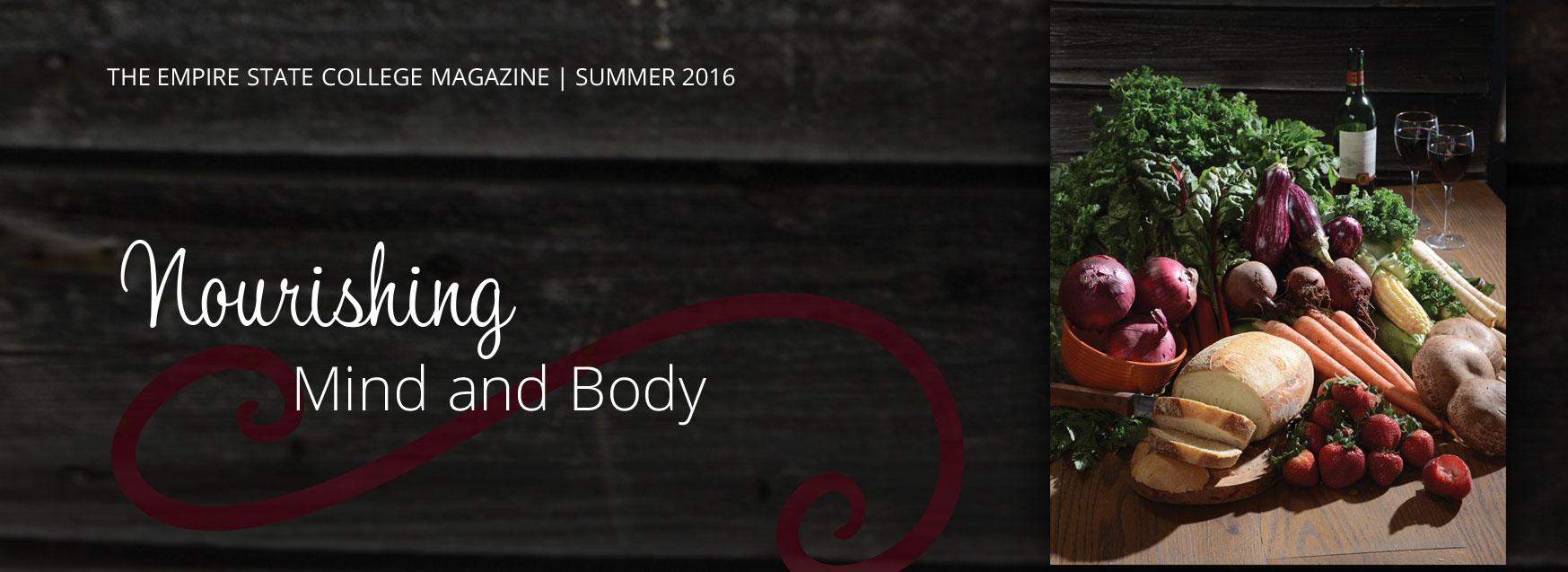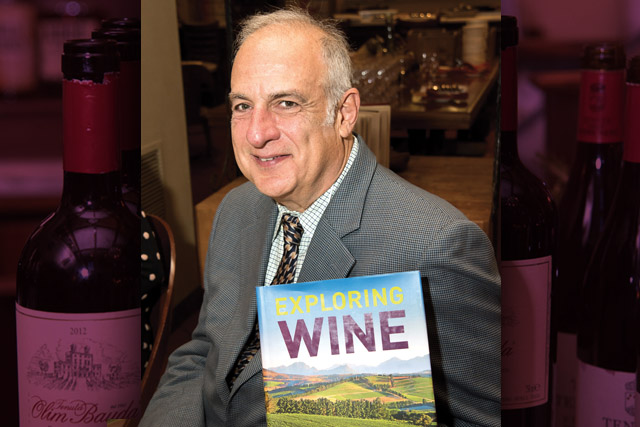
The Weiss Way to Perfect Pairing
by Helen Susan Edelman

According to Michael Weiss ’92, “If it grows together, it goes together,” is a basic tenet of appreciating wine. “That means, Tuscan food goes with Tuscan wines, or Greek wines with Greek food,” he explains. “Same with Spain, Portugal and France. Pair the wine with complementary food. Wine culture evolved to partner well with the foods in the particular regional diet. There’s a real joy in exploring that. The wine doesn’t have to be pricey. There’s a perfect local wine for tapas, beef bourguignon, falafel or pasta. Beer is never the answer.”
Weiss also recommends either complementing or contrasting the flavors of the food with the flavors of the wine. “For example,” he says, “the hint of sweetness in a Riesling can contrast with the spiciness of a seafood curry and complement the chutney served with it.”
Nevertheless, he admits, with a Montreal smoked-beef sandwich, there’s nothing like a Dr. Brown celery or black cherry soda.
These are words to the wise worth heeding from Weiss, a professor of wine studies at the world’s premier college for cooking and food studies, the Culinary Institute of America, in Hyde Park, N.Y. During his career, Weiss has savored wines that cost thousands of dollars for a single bottle, yet he reveres the spirit in which wine is shared as deeply as the specially cultivated grapes that yield it.
A much-lauded oenophile, esteemed journalist and author, international wine judge and chef-sommelier, Weiss waxes poetically about sipping wine in romantic Greece with his wife, where art and music contribute to the ambiance and evoke his positive response to the experience. He confides that he would rather have a $20 bottle of wine with her than a $200 bottle of wine in unpleasant company.
Weiss is the descendant of a Polish Jewish grandfather who was captured during World War II and spared death because of his talents as a chef. He dynamited his way out of prison, returned to fight in the Resistance and finally escaped to Montreal, where he opened a kosher deli. Weiss was raised there at his elbow, later spending weekends with his grandfather on Long Island, where the pair catered weddings and bar mitzvahs. Driven to study more formally, Weiss earned a two-year degree in liberal arts and literature at Dawson College in Montreal, a diploma at the Hotel School of Management in New York City, an advanced certificate from the Court of Master Sommeliers, a degree in Culinary Science from the Culinary Institute of America and his B.S. in Wine Education from Empire State College in 1992, the first C.I.A. graduate to complete the program.
“I was working 70 to 80 hours a week, moonlighting in the food industry and going to school,” he recalls. “My parents were Holocaust survivors and there was no financial support to be had. We were just glad to be alive – but, I, myself, lived like a refugee. It wasn’t a straight and easy path.”
Married, he now lives east of Rhinebeck, where his wife is an art therapist. When he’s not in the classroom, hosting wine pairings, writing about wine, judging food and wine competitions, or traveling to wine growing regions across the United States and abroad, Weiss immerses himself in playing the guitar, at least 15 hours per week, especially classical, flamenco and bossa nova. Sometimes, he integrates guitar music and his wife’s art into tasting dinners or festivals.
Weiss’ reflections on wine are both broad in substance and focused in depth, whether he’s discussing how much to spend on wine, where to buy great wine in locations from France to New York’s Finger Lakes, whether a wine’s name refers to the kind of grapes it’s produced from or its region of origin, what part chemistry plays in pairing or, the most popular topic, how to pair wine with food.
An arm’s-length list of global honors pay homage to Weiss’ expertise. He received the Distinguished Service Award from the Italian Trade Commission, was an inductee of the Confraria do Vinho do Porto, received a Lifetime Special Achievement Award from the European Wine Council and
was awarded a Diploma of Honor from the Corporation des Vignerons de Champagne.
As sophisticated and nuanced as Weiss’ knowledge is, he still deals with universals. If someone asks a guest to bring wine to dinner, but doesn’t share the menu, Weiss suggests “a sparkling Spanish rosé, usually under $20, which works as a cocktail and with most food – duck, salmon, vegetables, pasta with red sauce and lamb.” He is a fan of Chateau Frank from New York’s own Finger Lakes region and wines from the Iron Horse vineyard in California. He praises the wines of the Hudson Valley region, Finger Lakes and Long Island, which he says have improved over the last two decades as growers and producers use better techniques. He’s particularly partial to New York Rieslings, both semi-dry and sweet.
“You generally pay more for better-known wines, but you can get better value if you’re willing to go off the beaten path,” he advises. “There’s more bad wine out there than ever before, but you can find a good one, even an excellent one, if you do some research.”
Weiss estimates he’s mentored close to 19,000 students in the 29 years he’s been teaching and “every one of them could learn how to taste the differences in the flavors of grape types, whether a wine is fruit-forward, spicy or earthy. You don’t have to be born with a special skill to learn how to do it.”
Weiss notes that as ancient a tradition as wine has been in human culinary experience, “Things are changing with global warming, what can be planted and what will thrive. Vineyards are experimenting – you can think of this as exciting or scary. There is a politics of wine.”
As for the art of drinking wine well, Weiss does not equivocate. “Wine can be life enhancing for those who pace themselves and learn to control portions and timing,” he says. “It’s not to get drunk on. When wine class students sip the wine, theycan recognize the flavors, then spit it out, and still pair it with foods. Wine can enhance or ruin a meal. You can love it or hate it, depending on whether you serve it with the right or wrong food. For example, if you serve a salty Virginia ham with a Cabernet, it will result in a metallic flavor – disgusting. Rich fish dishes can be served with a Pinot Noir or Gamay, but not Cabernet, because the omega 3 fatty acids in the fish will clash with the tannins – it would be like having aluminum foil rubbed on your tooth fillings.”
Wine is a pleasure, not just a career for Weiss, who is both an aficionado and an expert. He concludes, “It’s very humbling to study wine science, learning its complexities. For me, it’s an infinite quest with many gratifying relationships and experiences.”
Wine Pairing: Tips and More
- Balance the delicacy or richness of a dish with the equivalent body/texture of a wine. (Tawny port with milk chocolate and ruby reserve or late-bottled vintage port with dark chocolate, for instance.)
- Purchase American or Australian wine for something fruity.
- Avoid full-bodied Cabernet or Chardonnay with spicy food, because the combination is uncomfortably hot.
- Don’t drink heavy white wine with spicy Asian, Tex Mex or Moroccan food, because the taste of the food will be overpowered.
- Sample tart wines with goat cheese and Shiraz with meats.
- Rieslings’ hint of sweetness contrasts nicely with smoked salmon.
- If you’re a beginner, try something sparkling, like a Riesling or one of the native white grapes of Portugal, Spain or Italy.
- Don’t overspend.
- Beginners should look for wine with low-alcohol content, in either red or white, for under $20.
- Buying a bottle of wine at dinner is usually more cost effective than buying by the glass, if diners plan to drink more than one glass.
- Don’t be afraid of screw tops. A cork can be infected and moldy and ruin wine by stripping it of character and giving it a bad smell.
- Finally, keep the wine cellar at 55 degrees F.